L’économie émergente du bois urbain
Sous Megan Offner, New York Heartwoods
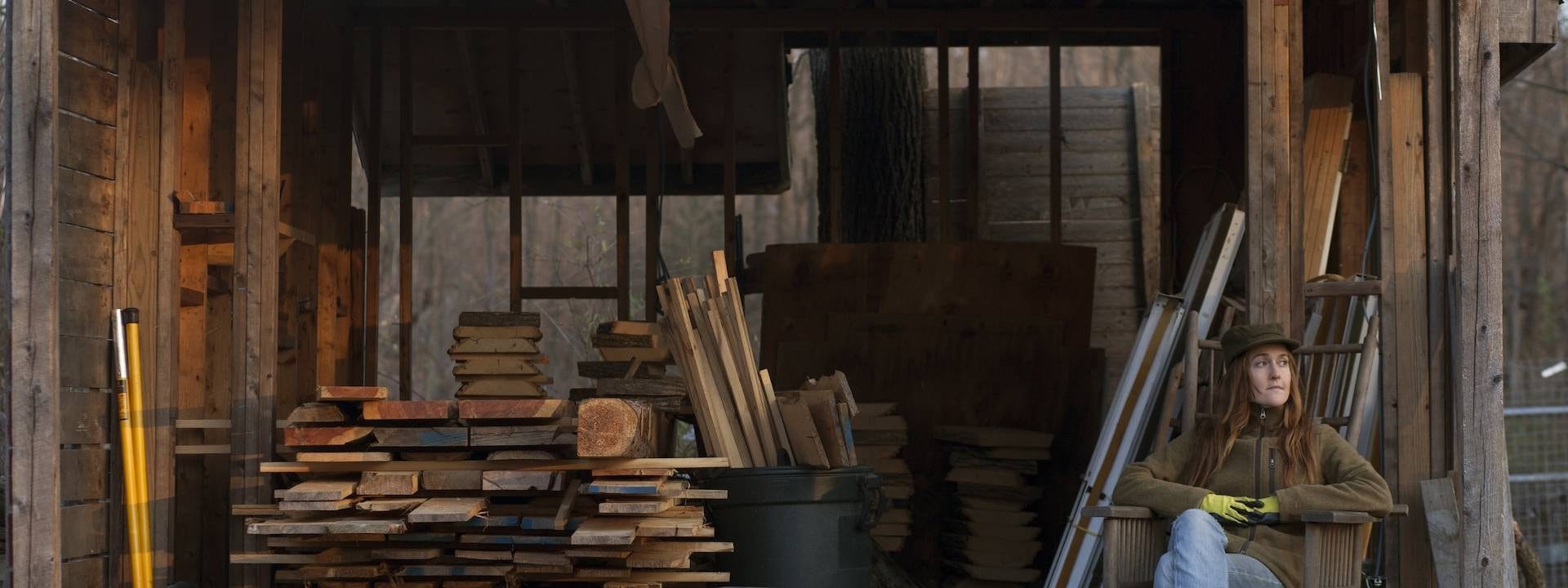
New York Heartwoods est une entreprise sociale dirigée par des femmes et située à Warwick, dans l’état de New York. L’entreprise a été fondée en 2010, avec l’objectif de régénérer la vitalité des forêts et de maximiser la valeur des arbres « inexploitables ». Megan Offner, l’une des cofondatrices de l’entreprise, partage sa vision des nouvelles niches de marché nées de l’émergence de l’économie du bois urbain.
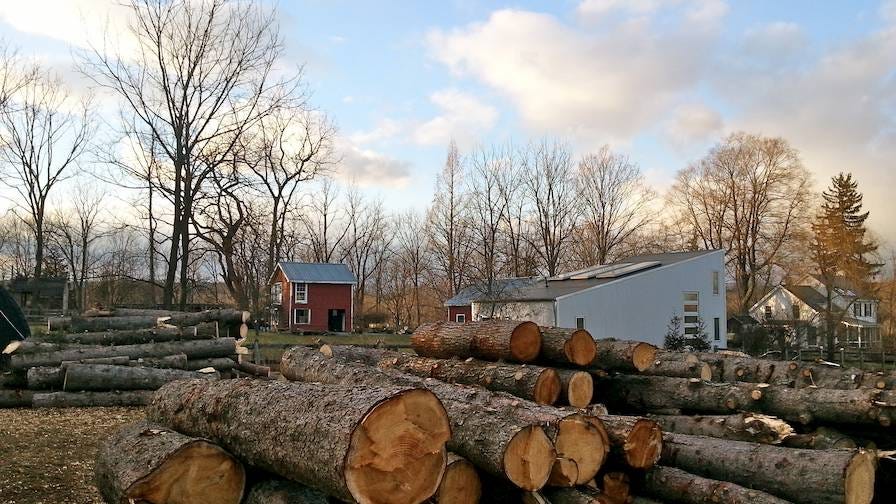

New York Heartwoods (NYH) a débuté en 2010, à l’aide d’une scierie mobile Wood-Mizer LT40 hydraulique. Nous avons développé notre plan de gestion et d’exploitation des arbres après avoir pris conscience du nombre d’arbres qui tombaient, mouraient et étaient évacués par les arboriculteurs.
Plusieurs tempêtes violentes et des invasions d’insectes ont mis nos forêts et nos communautés face à des défis inédits, tandis que les budgets des municipalités et des propriétaires sont grevés par l’enlèvement à répétition des arbres tombés ou mourants. Toutes les décharges ont fort à faire pour absorber la quantité de déchets de bois que cela représente. En parallèle, des gens ont besoin d’un travail et les communautés évoluent vers plus de résilience.
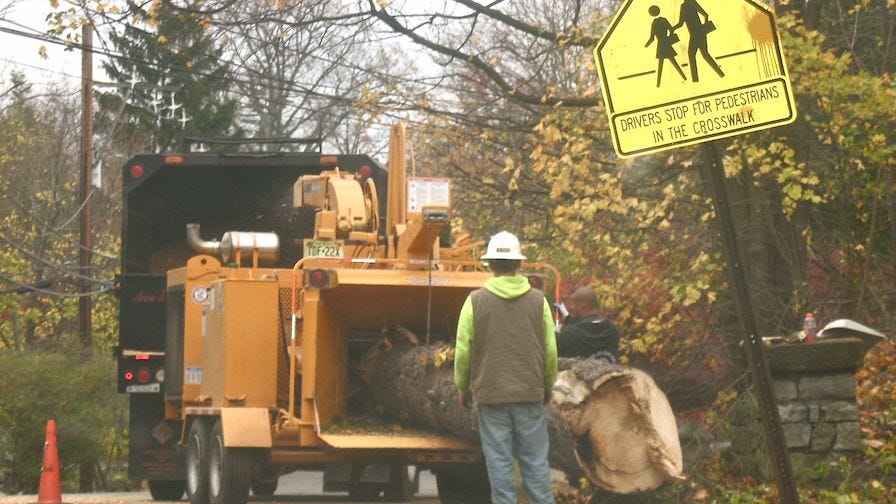

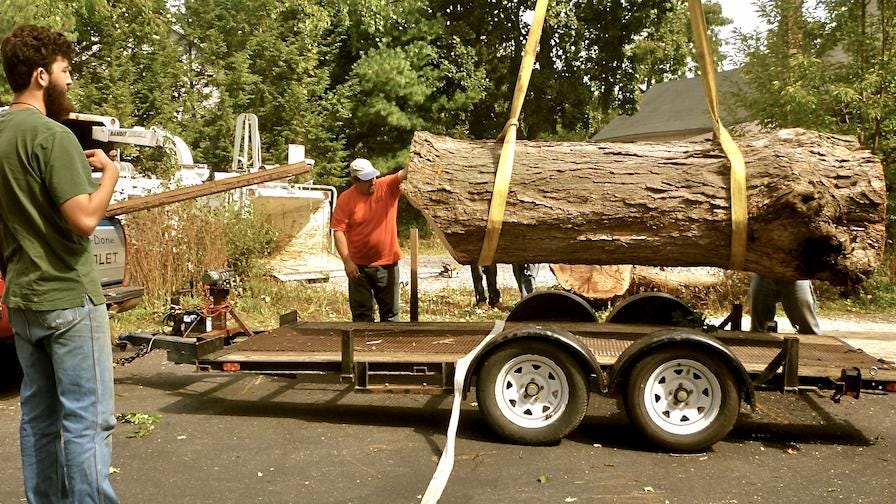

En transformant le bois urbain, nous participons à la création de solutions :
• réduction des frais d’évacuation du bois,
• sortie d’un matériau de valeur du flux des déchets,
• réduction des émissions de gaz à effet de serre,
• alimentation de la demande pour des produits en bois local,
• développement d’une nouvelle économie passionnante.
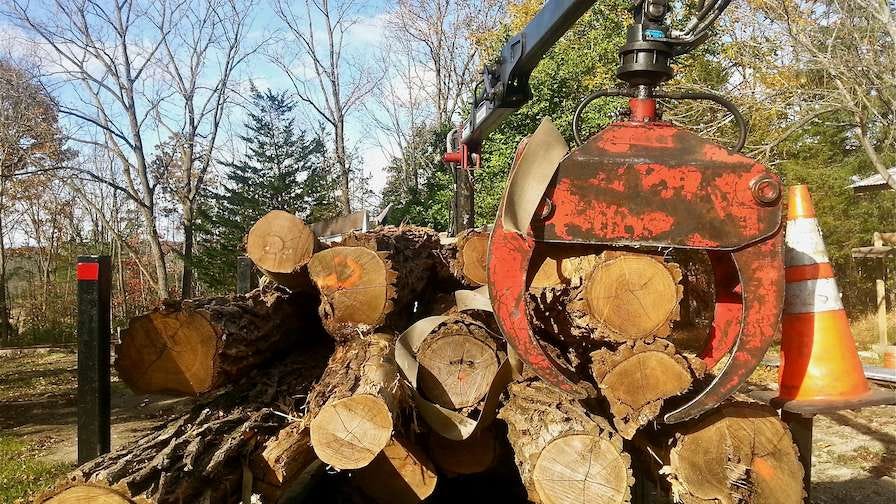

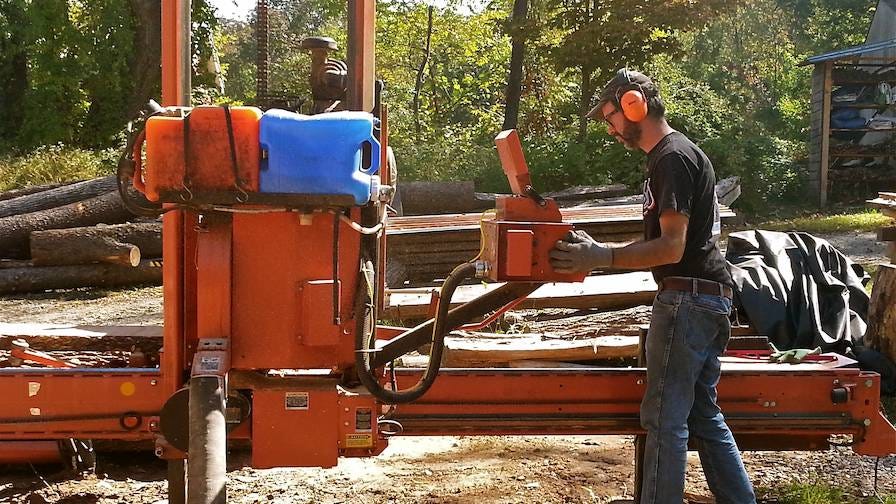

Les relations locales sont la clé, pour l’offre comme pour la demande
Du fait d’événements climatiques annuels tels que les ouragans et les tempêtes ou de l’arrivée d’insectes nuisibles, nous avons accès à plus de bois que notre équipement ne nous permet d’en transformer. L’enlèvement des billes est un travail considérable pour nous et, à notre échelle, souvent inabordable financièrement. En travaillant avec des scieurs professionnels, nous pouvons récupérer gratuitement ou, au pire, au prix du carburant et du temps du conducteur les billes qui partiraient au rebut.
Au-delà des services de sciage professionnels, qui nous procurent à la fois les billes et les clients pour acheter le bois, il y a les propriétaires, les institutions, les fiduciaires foncières, le ministère des Transports, les entreprises de services publics, les gestionnaires du foncier municipal et les autorités locales. Nous avons constaté que ces dernières constituaient des contacts particulièrement utiles, car c’est elles qui contrôlent ce que les arboriculteurs font des arbres urbains. Comme la plupart des villes font face à des coûts de plus en plus grands pour les services municipaux tout en voyant leurs revenus baisser, le coût des décharges monter et l’espace disponible diminuer, la redirection des billes crée des solutions pour la gestion des déchets, diminue les dépenses de remise en état après les tempêtes, tout en permettant de générer du bois pour faire des bancs dans les parcs, des tables de pique-nique, des palissades, des planchers, ou des meubles pour les services municipaux. La possibilité d’alléger les problèmes locaux tout en créant du bois d’œuvre de grande valeur peut conduire à des contrats municipaux et à des ressources qui répondront à la fois l’offre de billes et la demande de produits.
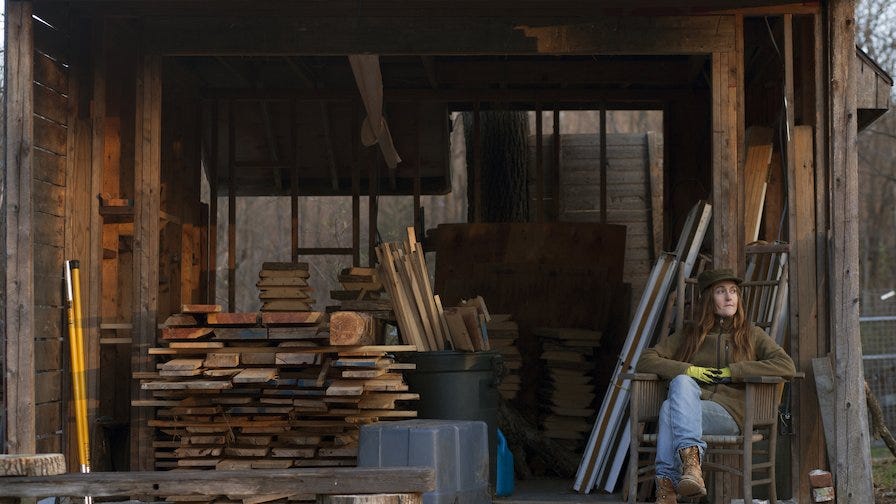

Les scies à ruban mobiles ont un avantage considérable sur les grandes scieries à lame circulaire lorsqu’on travaille sur les arbres urbains
Le fait qu’elles puissent être transportées sur site peut éliminer les casse-têtes logistiques et les dépenses liées au transport ou à l’élimination des billes.
Par exemple, après l’ouragan Sandy, les décharges ont été remplies au maximum de leur capacité, et de nombreuses villes de l’état de New York ont organisé l’entreposage des billes sur des parkings. Les scieurs locaux étaient invités à venir et à scier gratuitement ce qui les intéressait, et même dans ces conditions il a fallu des mois pour que ces piles diminuent. Le coût des dégâts occasionnés par les fragments métalliques, courants dans les arbres urbains, est trop élevé, ce qui représente un risque pour les scies circulaires professionnelles. Le métal peut émousser ou même briser les lames, mais puisque les lames des scies à ruban étroit sont peu chères et faciles à affûter, cette dépense peut être compensée grâce à un marketing mettant en valeur l’histoire de l’arbre et le caractère du bois.
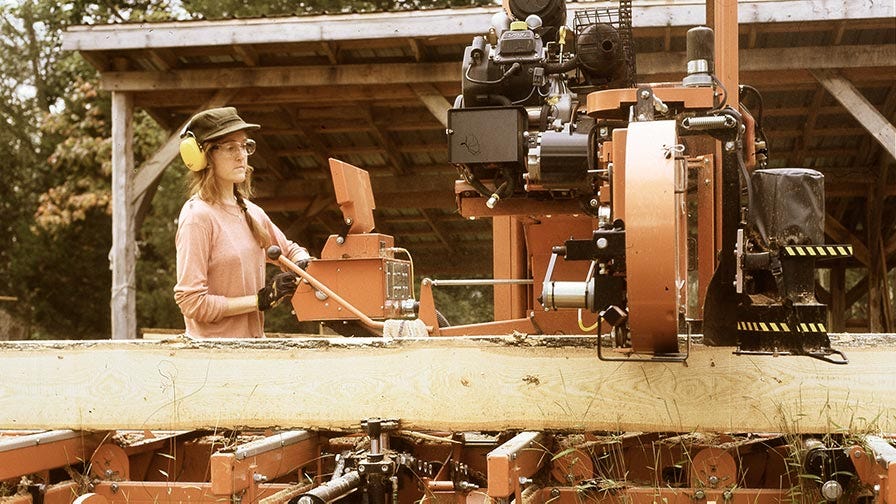

Les arbres urbains ont généralement des branches plus basses et contiennent des fragments de métal ou d’autres corps étrangers, qui créent des nœuds, des teintes et un grain spectaculaires. Ces caractéristiques uniques, tout comme l’histoire de l’arbre, plaisent aux artisans, aux fabricants, aux décorateurs et aux architectes qui créent des meubles, des planchers ou d’autres produits sur mesure. Documenter l’histoire de l’arbre et fournir des photos de sa transformation en produits finis ajoutent de la valeur en lui donnant une signification plus profonde aux yeux de l’acheteur. Chaque secteur d’activité utilise du bois sous une forme ou sous une autre, ce qui crée une multitude de marchés de niche potentiels.
La croissance démographique s’accompagne d’une augmentation de la superficie urbanisée. Selon le Journal of Forestry, le total des surfaces urbanisées aux États-Unis devrait passer de 3,1 % en 2000 à 8,1 % en 2050. Cela représente un total de 392 400 km2, une surface plus grande que l’état du Montana. De ce fait, la production et la vente de bois urbain vont aussi croître, et il y aura davantage d’intégration dans les systèmes de gestion municipaux.
Pour plus d’informations, rendez-vous sur www.newyorkheartwoods.com
***

